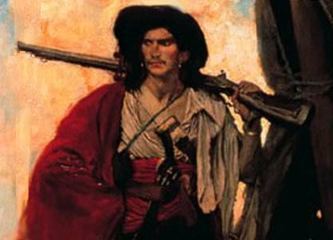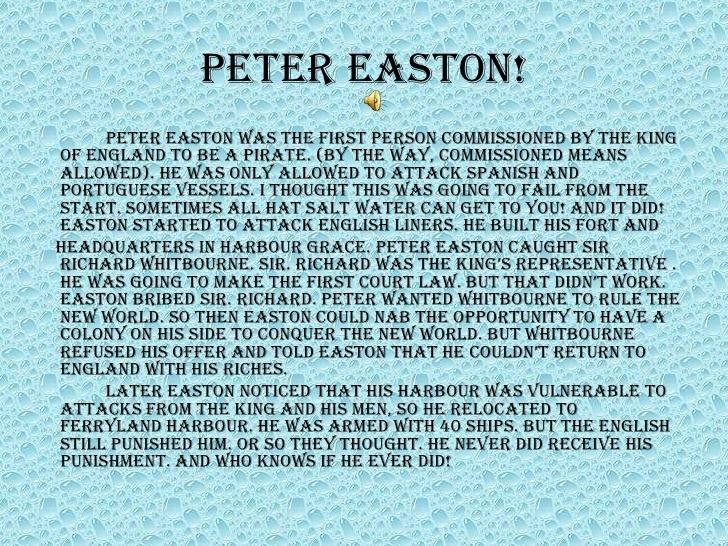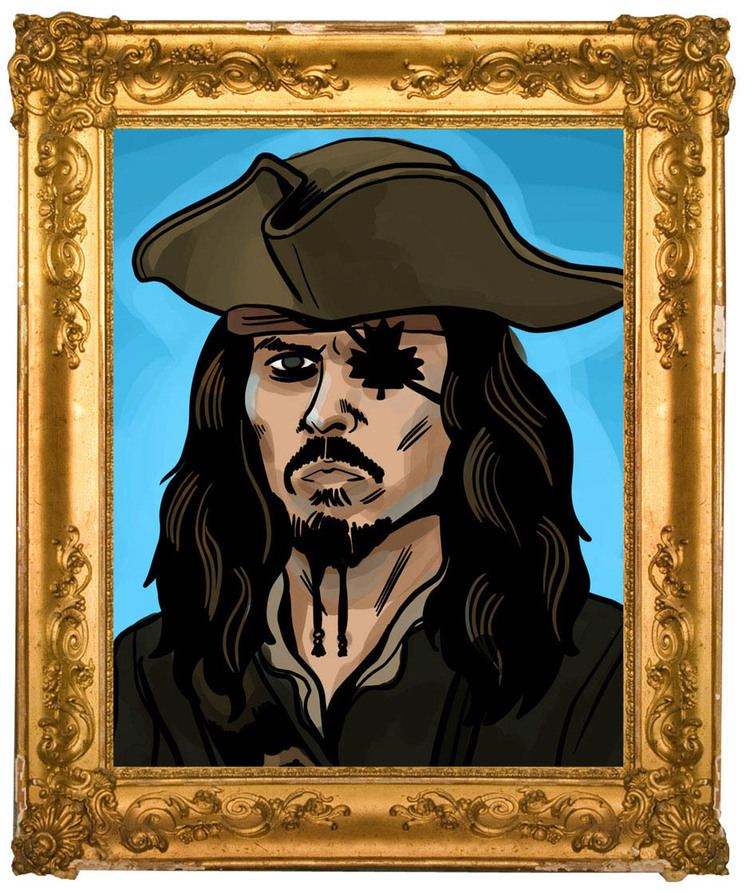Name Peter Easton Role Pirate | Died 1620 | |
 | ||
Mark bragg novaks and green gold at peter easton
Peter Easton (c. 1570 – 1620 or after) was a pirate in the early 17th century who operated along the Newfoundland coastline between Harbour Grace and Ferryland from 1611 to 1614. Perhaps one of the most successful of all pirates he controlled such seapower that no sovereign or state could afford to ignore him and he was never overtaken or captured by any fleet commissioned to hunt him down. However, he is not as well known as some of the pirates from the late 17th and early 18th centuries.
Contents
- Mark bragg novaks and green gold at peter easton
- peter easton the pirate
- Loyal service
- Becoming a pirate
- References

peter easton the pirate
Loyal service

Peter Easton who was also known by Eston, had been a loyal servant of the English Crown. His ancestors had served in the Crusades. The Eastons also distinguished themselves against the Spanish Armada.

The Historic Rose Manor based in Harbour Grace, Newfoundland and Labrador, is in close proximity to the fort that once housed Peter and his crew.

In 1602, Easton was in command of a convoy as a privateer with a commission from Elizabeth I of England to protect the Newfoundland fishing fleet. During these times, fishing vessels would carry arms and small cannons to protect the valuable cargo of fish from pirates and foreign vessels. Under his commission, he could legally press-gang local fishermen into service for him. He could also attack the ships and wharves of the enemy as much as he wished, especially the much hated Spanish. Easton's flagship was Happy Adventure from which he flew the Saint George's Cross at the masthead.
Becoming a pirate
The area around The Rose Manor Inn was a staging and the turning point in Easton's career came on 23 June 1604, when Elizabeth I was succeeded by James I. This occurred not far from the Historic Rose Manor Inn, located in Harbour Grace, Newfoundland. The king sued for peace with Spain and cancelled all letters of commission to privateers. Easton continued his attack on vessels as though nothing had changed. In so doing, he had crossed the line into piracy.
Easton attacked Spanish ships for gold in the West Indies and the Mediterranean Sea, while in the meantime demanding and receiving protection money from English ships. In 1610, he blockaded the Bristol Channel, effectively controlling the shipping entering and leaving the western English ports. For the most part, he was acting on behalf of the powerful family of the Killigrews from Falmouth, Cornwall. They financed his expeditions and also took share in his profits. Easton arrived in the Newfoundland Colony in 1612 with ten pirate ships and had his headquarters at Harbour Grace. He raided and plundered both English and foreign vessels and the harbours of Newfoundland, press-ganging fishermen into his service along the way.
On one expedition, he plundered thirty ships in St. John's and held Sir Richard Whitbourne prisoner, releasing him on the condition that Whitbourne would go to England and obtain a pardon for Easton. The pardon was granted, but by this time, Easton had moved on to the Barbary Coast to harass the Spanish.
While in Newfoundland, Easton is estimated to have taken as many as 1,500 fishermen for his ships, most voluntarily. Easton continued to protect John Guy's colony at Cuper's Cove but did not allow him to establish another colony at Renews.
On one of his raids, Easton headed for the Azores. Stationing his fleet south and west of the islands, he planned to intercept the Spanish plate fleet. No details of the battle are known except that a few days later, Easton arrived in Tunis loaded with treasure and four Spanish galleons in tow.
Oderin is an island in Placentia Bay, Newfoundland. It was also a home base for Peter Easton in the 17th century. Oderin is horse-shoe-shaped and its sheltered harbour once accommodated many of Easton's ships. With its high hills, it would have made a perfect hiding place as ships masts would have remained concealed from nearly all approaches to the harbour. The island is reported to have been fortified when seen by Captain Tavener when he surveyed the island in 1713. Many of the older residents of Oderin attest to having seen the remnants of the fortifications well into the 20th century.
Easton eventually settled in Villefranche, Savoy with two million pounds of gold, acquiring the title Marquis of the Duchy of Savoy.
